Virginia Opossum
- March 19, 2024
- 0 comment
The Virginia opossum, scientifically known as Didelphis virginiana, is a fascinating marsupial native to North and Central America. It is perhaps most recognized for its unique ability to “play dead” when threatened, a behavior known as thanatosis. These creatures possess a distinct appearance with grayish-white fur, a long prehensile tail, and hairless ears. Virginia opossums are opportunistic omnivores, feeding on a diverse diet that includes fruits, insects, small mammals, and carrion. They are primarily nocturnal, preferring to forage and hunt during the night. Female opossums carry their young in a pouch, where they nurse and protect them until they are ready to venture out on their own.
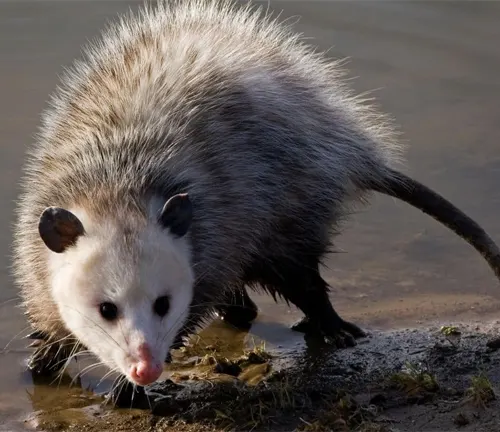
Despite facing threats such as habitat loss and human persecution, Virginia opossums have adapted well to various environments, including urban areas. They play a crucial role in ecosystem balance by controlling insect populations and scavenging carrion. Contrary to misconceptions, Virginia opossums are relatively resistant to many diseases, and they even help reduce the transmission of tick-borne illnesses like Lyme disease. Overall, these resilient creatures continue to captivate with their unique behaviors and adaptations, highlighting the importance of understanding and conserving their populations.
| Specifications | Details |
|---|---|
| Scientific Name | Didelphis virginiana |
| Common Name | Virginia Opossum |
| Family | Didelphidae |
| Size | 13 to 37 inches (including tail) |
| Weight | 4 to 14 pounds |
| Fur Color | Grayish-white, with variations |
| Tail | Prehensile, hairless, used for balance |
| Ears | Hairless, prominent |
| Diet | Omnivorous, includes fruits, insects, small mammals, carrion |
| Habitat | Diverse, including forests, farmlands, urban areas |
| Distribution | North and Central America |
| Nocturnal Habits | Active primarily during the night |
| Reproduction | Marsupial, young carried in pouch |
| Gestation Period | Around 12-13 days |
| Litter Size | Up to 20 offspring |
| Lifespan | 2 to 4 years in the wild, up to 8 years in captivity |
| Behavior | Opportunistic feeders, exhibit “playing dead” behavior when threatened |
| Conservation Status | Least Concern |
Exploring the Fascinating World of the Virginia Opossum
The Virginia opossum (Didelphis virginiana) stands out as one of North America’s most unique and fascinating creatures. With its distinctive appearance and intriguing behaviors, this marsupial has captured the curiosity of many. Let’s dive into the world of the Virginia opossum, exploring its characteristics, habitat, behavior, and interactions with humans.
Physical Characteristics
Size and Weight
Virginia opossums exhibit considerable variation in size, with adults typically measuring between 13 to 37 inches in length, including their tail. The tail itself can comprise a significant portion of their total length. In terms of weight, adult Virginia opossums generally range from 4 to 14 pounds, although individuals at the extremes of this range are less common. Female opossums tend to be smaller than males, but both genders can vary significantly in size depending on factors such as age, genetics, and environmental conditions.
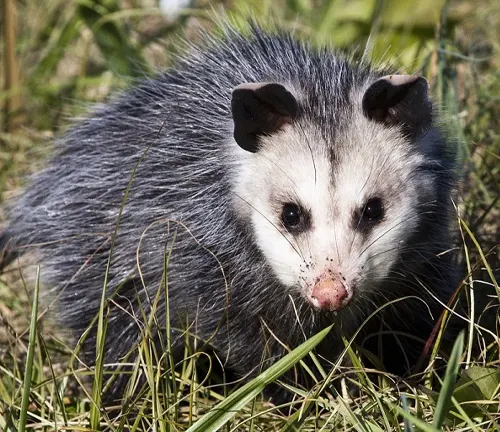

Fur and Coloration
The fur of the Virginia opossum is characterized by a coarse outer layer and a softer undercoat, providing insulation and protection against the elements. The coloration of their fur typically ranges from grayish-white to off-white, with variations in shade and pattern. Some individuals may exhibit darker or lighter patches of fur, particularly along their back and sides. Additionally, Virginia opossums often have a distinctive black mask-like pattern around their eyes, which contrasts with the lighter color of their fur. Overall, their fur and coloration help them blend into a variety of habitats, from wooded areas to urban environments, where they are commonly found.
Habitat and Distribution
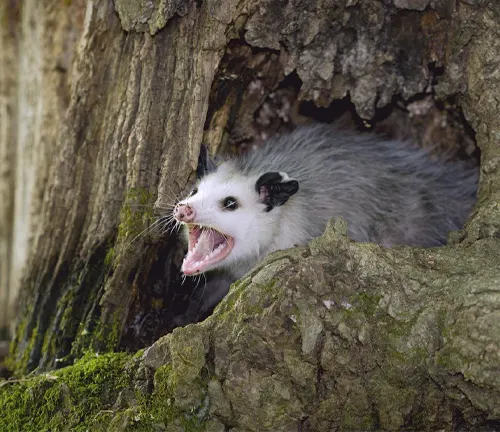
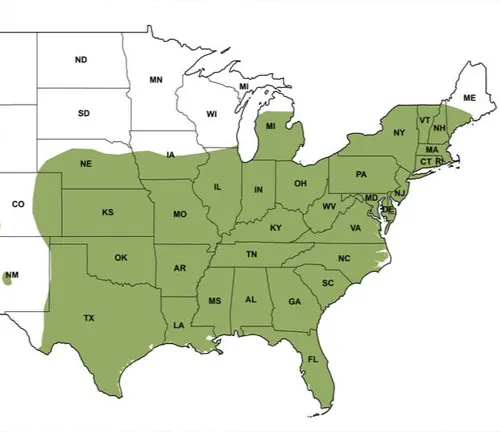
Virginia opossums are highly adaptable creatures that inhabit a wide range of environments across North and Central America. They can be found in diverse habitats, including forests, woodlands, grasslands, swamps, and even urban areas. Their ability to thrive in various ecosystems is facilitated by their opportunistic feeding habits and flexible behaviors.
In terms of distribution, Virginia opossums are native to North America, ranging from southern Canada down to northern Mexico. They are also present in parts of Central America, extending into countries such as Guatemala, Honduras, and Nicaragua. Within their range, Virginia opossums occupy territories that offer suitable food sources, shelter, and nesting sites.
Behavior and Diet
Nocturnal Habits
Virginia opossums are primarily nocturnal animals, meaning they are most active during the night. This nocturnal behavior helps them avoid predators and competition for resources, as many of their potential threats and competitors are diurnal (active during the day). During the night, Virginia opossums venture out of their shelter in search of food, water, and mates. Their keen senses, particularly their excellent sense of smell, aid them in navigating their environment and locating prey. They tend to spend the daylight hours resting in sheltered locations, such as dens or nests, where they are less vulnerable to predators.

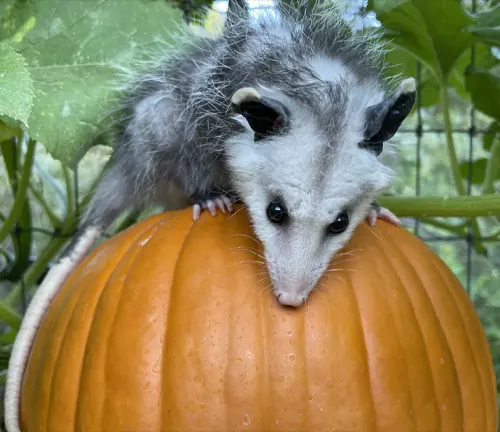
Omnivorous Diet
Virginia opossums have a diverse and omnivorous diet, meaning they consume a wide variety of foods including both plant and animal matter. Their diet includes fruits, berries, nuts, seeds, insects, small mammals, birds, eggs, reptiles, amphibians, and carrion (dead animals). This opportunistic feeding behavior allows them to adapt to changing food availability throughout the seasons and in different habitats. Their ability to consume carrion plays an important ecological role as scavengers, helping to clean up the environment by disposing of dead animals. Additionally, Virginia opossums may occasionally raid garbage cans or other human food sources, particularly in urban areas where food is more readily available.
Reproduction and Lifespan
Breeding Habits
Virginia opossums typically breed during the late winter or early spring months. Breeding behavior is initiated by hormonal changes triggered by factors such as increasing daylight hours and environmental conditions. Male opossums may compete for access to receptive females through vocalizations and physical displays.

Once mating occurs, female opossums carry the fertilized eggs for a gestation period of approximately 12 to 13 days. Following this short gestation period, the tiny, underdeveloped offspring, known as joeys, are born. Interestingly, female opossums have a unique reproductive anatomy with a pouch, similar to other marsupials. The joeys crawl into the mother’s pouch, where they attach themselves to her nipples and continue their development.
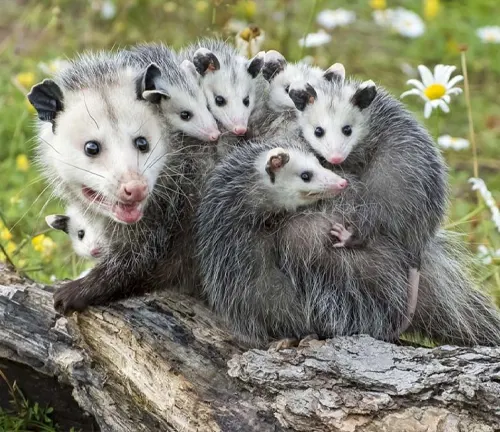
Development of Young
Inside the pouch, the joeys continue to grow and develop for an extended period. They remain attached to the mother’s nipples, nursing and receiving nourishment from her milk. The pouch provides a warm and protected environment for the young to continue their development, allowing them to grow and mature safely.
As the joeys grow, they eventually outgrow the pouch but remain close to their mother, riding on her back as she moves about. This stage of development allows the young opossums to gradually become accustomed to the outside world while still receiving protection and care from their mother.
Once the young opossums reach a certain level of maturity and independence, they venture out on their own, leaving the mother to start their own lives. The exact timing of this transition varies depending on factors such as environmental conditions and the availability of food resources. Overall, the development of young opossums from birth to independence is a fascinating process that showcases the unique reproductive strategy of these marsupials.
Adaptations and Unique Features
Playing Dead (Thanatosis)
One of the most fascinating defense mechanisms of the Virginia opossum is its ability to “play dead” when threatened, a behavior known as thanatosis. When faced with a potential predator or danger, the opossum will suddenly collapse onto its side, become limp, and remain motionless. In addition to feigning death, the opossum may also emit a foul-smelling odor, resembling the scent of a decaying animal, further convincing predators of its demise.

Thanatosis serves as an effective survival strategy for Virginia opossums, as many predators are less likely to attack a seemingly lifeless prey. This behavior gives the opossum an opportunity to escape once the threat has passed. Despite appearing dead, the opossum remains alert and can quickly resume normal activity once it perceives that the danger has subsided.
Reproductive Strategy
Virginia opossums have a unique reproductive strategy characterized by their marsupial reproductive anatomy. Female opossums have a pouch, or marsupium, where they carry and nurse their young. After mating, the fertilized eggs develop inside the female’s uterus for a brief period of around 12 to 13 days. Following this short gestation period, the tiny, underdeveloped offspring, known as joeys, are born.
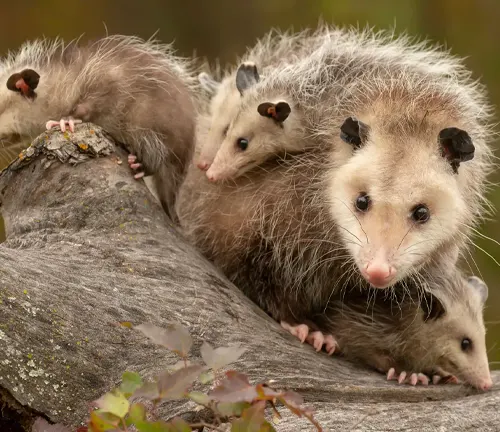
The newborn joeys are blind, hairless, and extremely vulnerable, resembling miniature embryos. They immediately crawl into the mother’s pouch, where they attach themselves to her nipples and continue their development. Inside the pouch, the joeys receive nourishment from the mother’s milk and grow rapidly over the course of several weeks.
As the joeys mature and grow stronger, they gradually venture out of the pouch and ride on the mother’s back. This stage allows the young opossums to explore their surroundings while still receiving protection and care from their mother. Eventually, the young opossums become independent and leave the mother to establish their own territories and reproduce, continuing the cycle of life for Virginia opossums.
Interactions with Humans
Role in Ecosystem
Virginia opossums play a crucial role in maintaining ecosystem balance and health. As omnivorous scavengers, they contribute to nutrient cycling by consuming a wide variety of food items, including insects, small mammals, fruits, carrion, and even some plant matter. By feeding on carrion, they help clean up the environment and prevent the spread of disease by reducing the presence of decaying animal carcasses. Additionally, Virginia opossums help control populations of pests such as insects and rodents, thus indirectly benefiting other species and maintaining ecological harmony. Their presence in ecosystems helps regulate population dynamics and contributes to overall biodiversity.
Urban Adaptability
Virginia opossums have demonstrated remarkable adaptability to urban environments, successfully coexisting with human populations in cities and suburban areas. Their ability to thrive in urban settings is attributed to several factors. Firstly, Virginia opossums are opportunistic feeders, able to exploit a wide range of food sources, including human waste and discarded food. Additionally, they are highly adaptable in terms of habitat use, utilizing structures such as attics, crawl spaces, and abandoned buildings as shelter. Their nocturnal habits and relatively low visibility during the day also help them avoid human disturbances.
Despite facing challenges such as habitat loss, vehicle collisions, and human persecution in urban areas, Virginia opossums have managed to establish stable populations and even thrive in some urban environments. Their presence serves as a reminder of the resilience and adaptability of wildlife in the face of human development. Additionally, studying their behavior and ecology in urban settings can provide valuable insights into urban wildlife management and conservation strategies. Overall, Virginia opossums’ ability to adapt to urban environments highlights their importance as integral components of urban ecosystems.
Challenges and Conservation Efforts
Despite their adaptability, Virginia opossums face various challenges in their natural habitats, as well as in urban environments where they coexist with humans. Some of the key challenges and conservation efforts related to Virginia opossums include:
- Habitat Loss and Fragmentation: The loss and fragmentation of natural habitats due to urbanization, agriculture, and infrastructure development pose significant threats to Virginia opossum populations. As their habitats shrink and become fragmented, opossums may face difficulties in finding suitable shelter, food, and breeding sites.
- Vehicle Collisions: Virginia opossums are frequently involved in vehicle collisions, especially in areas where urbanization encroaches upon their natural habitats. Collisions with vehicles often result in injuries or fatalities, leading to population declines in some regions.
- Human Persecution: Despite their harmless nature, Virginia opossums are sometimes perceived as pests or nuisances by humans. They may be subjected to trapping, poisoning, or other forms of control measures, leading to direct harm to opossum populations.
- Disease: While Virginia opossums are relatively resistant to many diseases, they can serve as reservoirs for certain pathogens, including those that may affect humans or domestic animals. Diseases such as leptospirosis and distemper can pose risks to opossum populations and may impact their overall health and survival.
Conservation efforts aimed at protecting Virginia opossums and their habitats include:
- Habitat Preservation: Conservation organizations and land management agencies work to preserve and protect natural habitats that are vital for opossum populations. This may involve establishing protected areas, creating wildlife corridors, and implementing habitat restoration initiatives.
- Public Awareness and Education: Educating the public about the ecological importance of Virginia opossums and dispelling myths and misconceptions can help foster coexistence between humans and opossums. Public outreach programs, educational campaigns, and community engagement initiatives play a crucial role in raising awareness about opossum conservation.
- Wildlife Rehabilitation: Wildlife rehabilitation centers play a key role in rescuing and rehabilitating injured or orphaned Virginia opossums. By providing medical care, rehabilitation, and release programs, these facilities help mitigate the impacts of human-related threats on opossum populations.
- Research and Monitoring: Conducting scientific research on Virginia opossum ecology, behavior, and population dynamics is essential for informing conservation strategies and management decisions. Monitoring opossum populations and tracking changes in their abundance, distribution, and health status helps identify emerging threats and evaluate the effectiveness of conservation measures.
Misconceptions and Facts
Disease Transmission
Virginia opossums are sometimes associated with disease transmission, although their role in spreading diseases to humans and other animals is often misunderstood. While opossums can carry certain pathogens, including bacteria and parasites, the risk of disease transmission to humans is generally low. Common diseases associated with Virginia opossums include leptospirosis, salmonellosis, and various types of parasites such as fleas and ticks.
It’s important to note that direct contact with opossums or their droppings is typically required for disease transmission to occur. Practicing good hygiene, such as washing hands thoroughly after handling opossums or cleaning up areas where they frequent, can help minimize the risk of disease transmission. Additionally, pet owners should take precautions to prevent their animals from coming into contact with opossums to reduce the risk of disease spread.
Despite their association with certain diseases, Virginia opossums also play a role in disease control within ecosystems.
Role in Disease Control
Virginia opossums contribute to disease control by consuming large quantities of insects, including those that are vectors for disease-causing pathogens. For example, opossums are known to feed on ticks, which can transmit diseases such as Lyme disease and Rocky Mountain spotted fever to humans and animals. By reducing tick populations through predation, opossums help limit the spread of these tick-borne illnesses.
Additionally, Virginia opossums play a role in scavenging carrion, including the carcasses of animals that have died from disease. By consuming carrion, opossums help remove potential sources of infection from the environment, thereby reducing the risk of disease transmission to other animals.
Overall, while Virginia opossums may be associated with certain diseases, they also provide valuable ecosystem services by helping to control insect populations and reduce the spread of disease-causing pathogens. Understanding and appreciating the ecological role of opossums in disease control can help foster coexistence and conservation efforts aimed at protecting these unique marsupials and the ecosystems they inhabit.
Different Species
Southern Opossum
(Didelphis marsupialis)
Found in South America, particularly in regions such as Venezuela, Brazil, and Colombia.
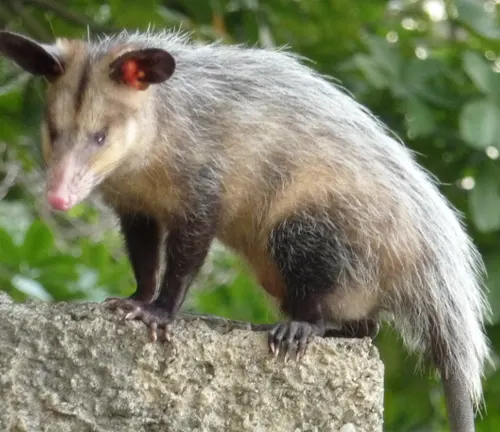

Mexican Opossum
(Didelphis mexicana)
Native to Mexico and parts of Central America, including Guatemala and Honduras.
Common Opossum
(Didelphis albiventris)
Found in various South American countries, including Argentina, Bolivia, and Paraguay.
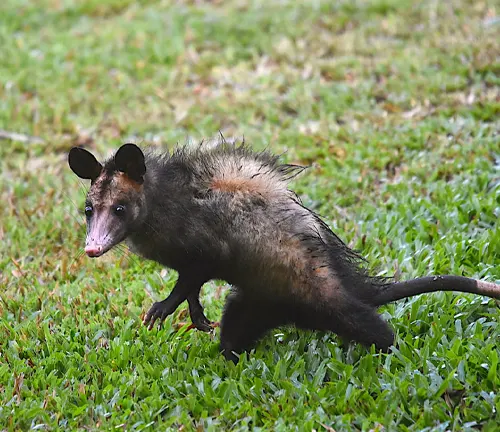
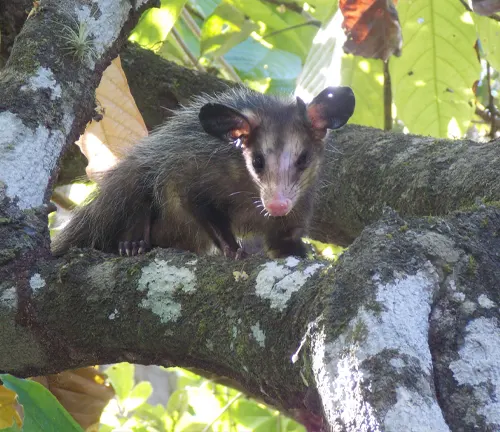
Big-eared Opossum
(Didelphis aurita)
Native to Brazil, particularly in the Atlantic Forest region.
Central American Opossum
(Didelphis pernigra)
Found in Central America, including countries like Costa Rica and Panama.
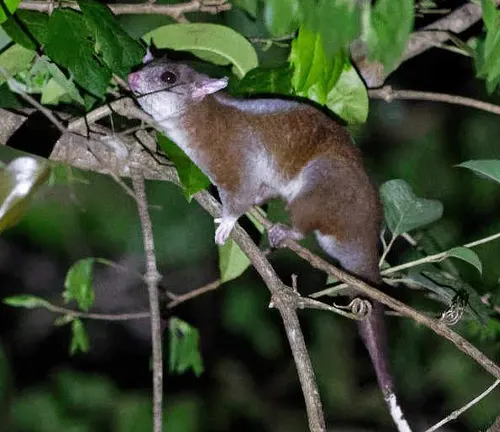
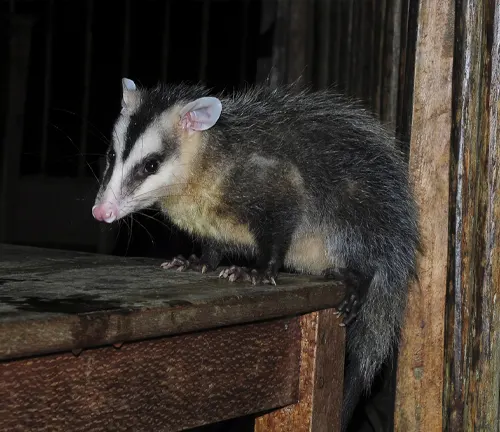
Andean White-eared Opossum
(Didelphis pernigra)
Endemic to the Andean region of South America, including parts of Ecuador, Peru, and Bolivia.
Frequently Asked Questions (FAQs)
- What do Virginia opossums eat in the wild?
Virginia opossums are omnivores and consume a varied diet including fruits, insects, small mammals, and carrion. - How long do Virginia opossums live in the wild?
In the wild, Virginia opossums typically live for about 2 to 4 years, although this can vary depending on factors such as predation and habitat quality. - Do Virginia opossums carry diseases?
While Virginia opossums can carry certain diseases such as leptospirosis, they are not significant vectors of disease transmission to humans. - Can Virginia opossums climb trees?
Yes, Virginia opossums are skilled climbers and often use their prehensile tails to aid in climbing trees and other structures. - Are Virginia opossums marsupials?
Yes, Virginia opossums belong to the order Marsupialia and are characterized by the presence of a pouch in females where they carry and nurse their young. - Do Virginia opossums hibernate during winter?
Virginia opossums do not hibernate but may become less active during cold periods, relying on their thick fur and sheltered locations to stay warm. - Are Virginia opossums protected by law?
Virginia opossums are not listed as endangered or threatened species and are not afforded specific legal protection in many regions. - How many babies do Virginia opossums have at once?
Female Virginia opossums can give birth to litters of up to 20 offspring, although the average litter size is typically smaller. - Can Virginia opossums swim?
Yes, Virginia opossums are capable swimmers and may traverse bodies of water when necessary. - Are Virginia opossums territorial?
Virginia opossums are generally not territorial and may share overlapping home ranges with other individuals. - Do Virginia opossums make good pets?
While some people may keep Virginia opossums as pets, they are not considered ideal pets due to their wild instincts and specific care requirements. - What predators do Virginia opossums have?
Virginia opossums face predation from a variety of animals, including larger mammals such as coyotes, foxes, and bobcats, as well as birds of prey and domestic pets.


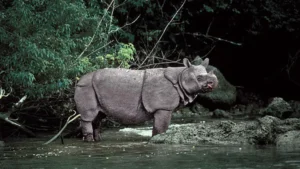
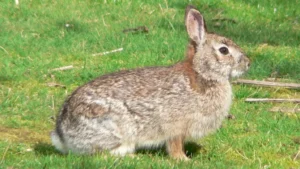
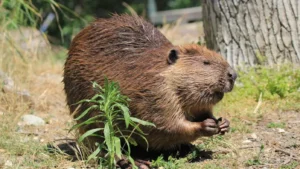
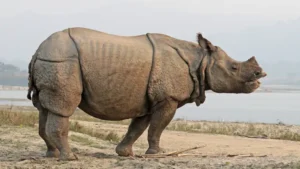
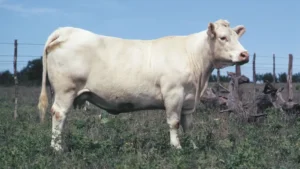
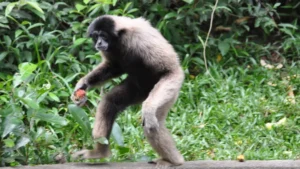
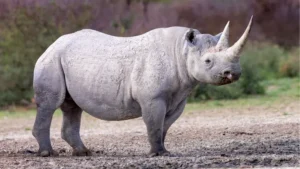
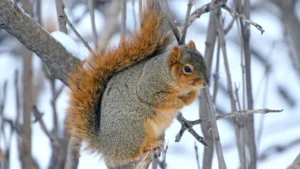

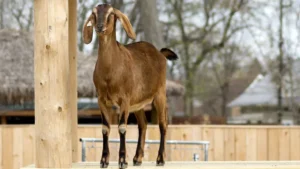
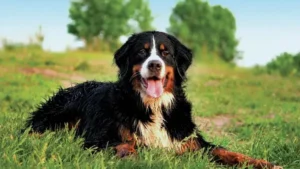
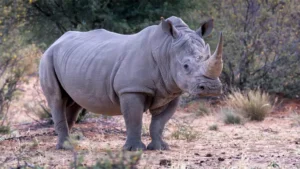
Leave your comment